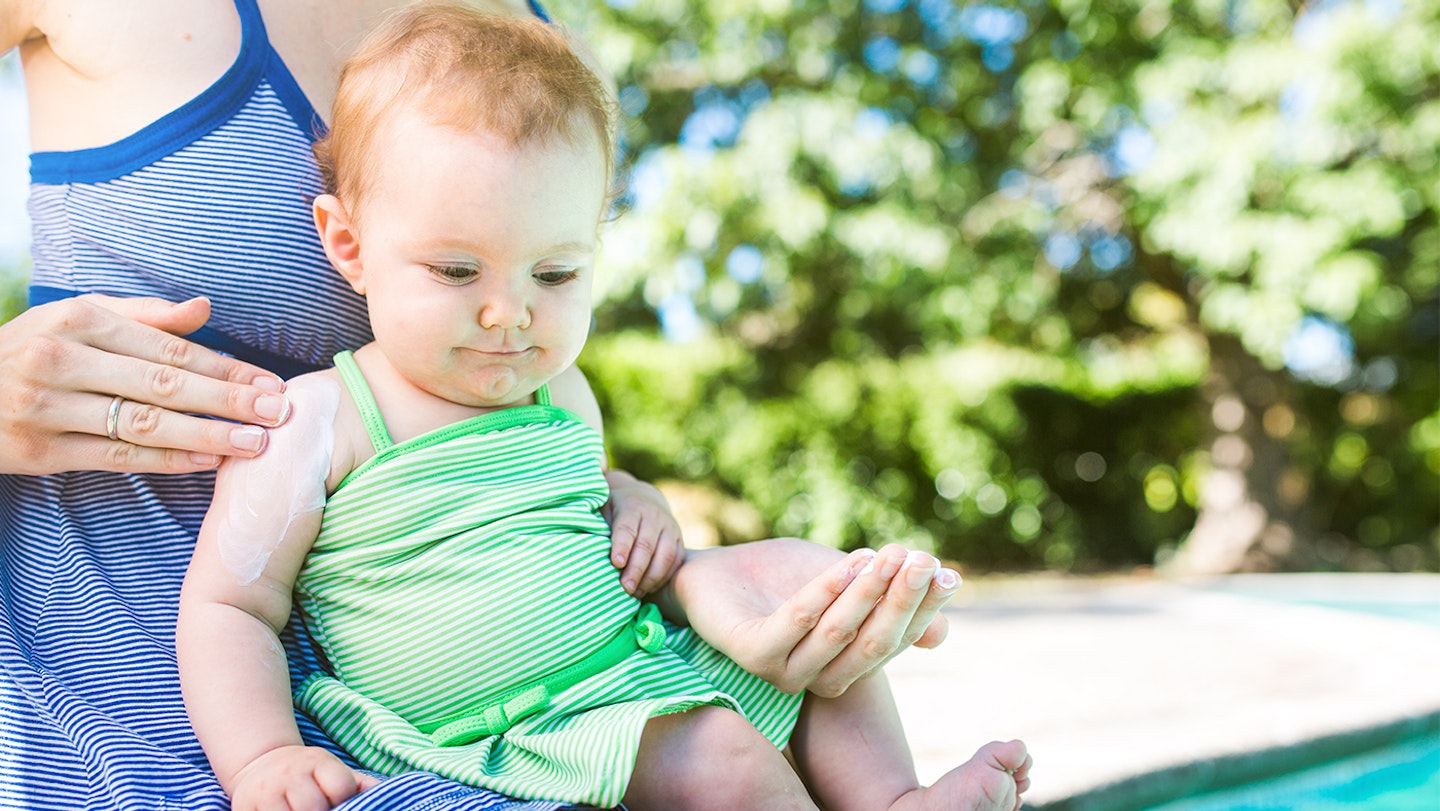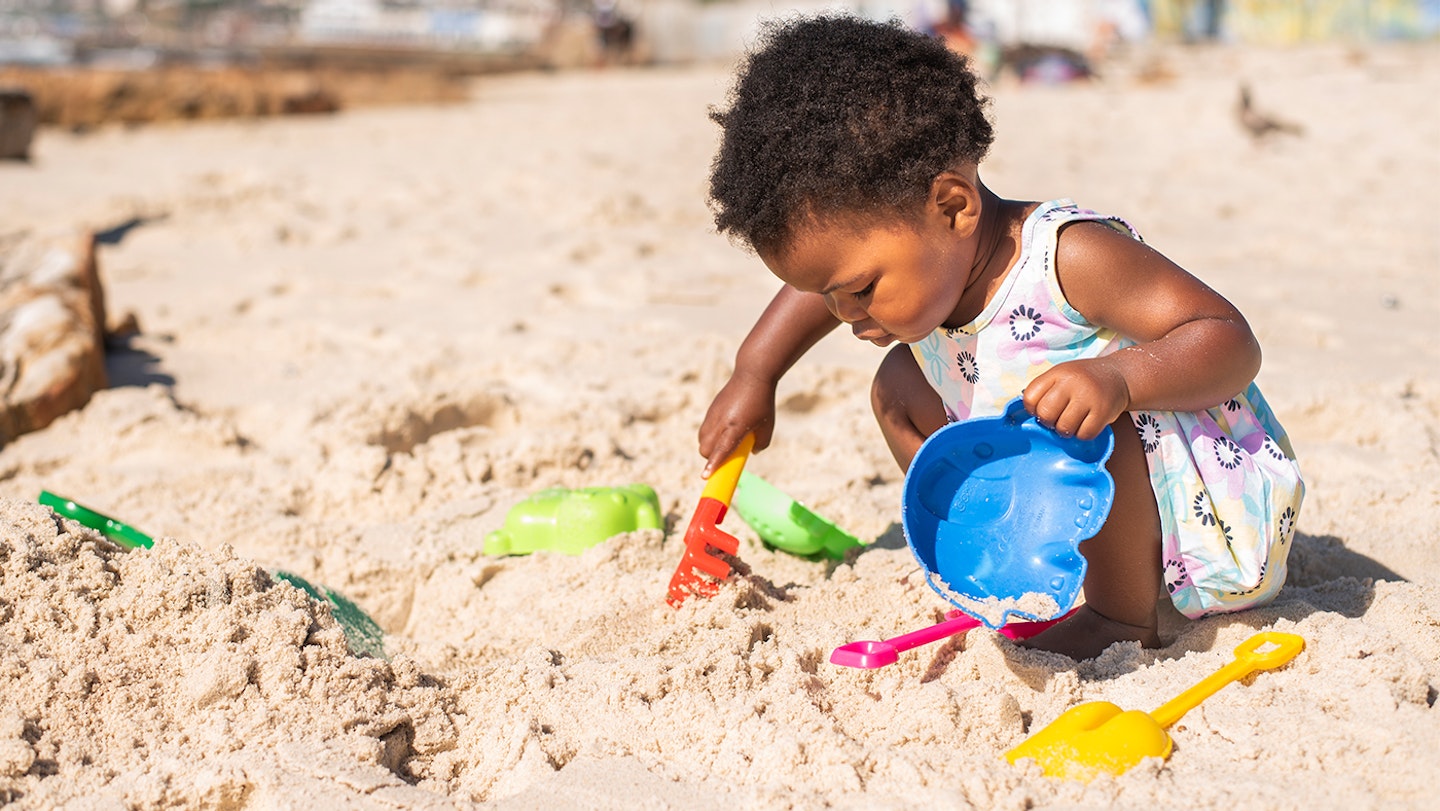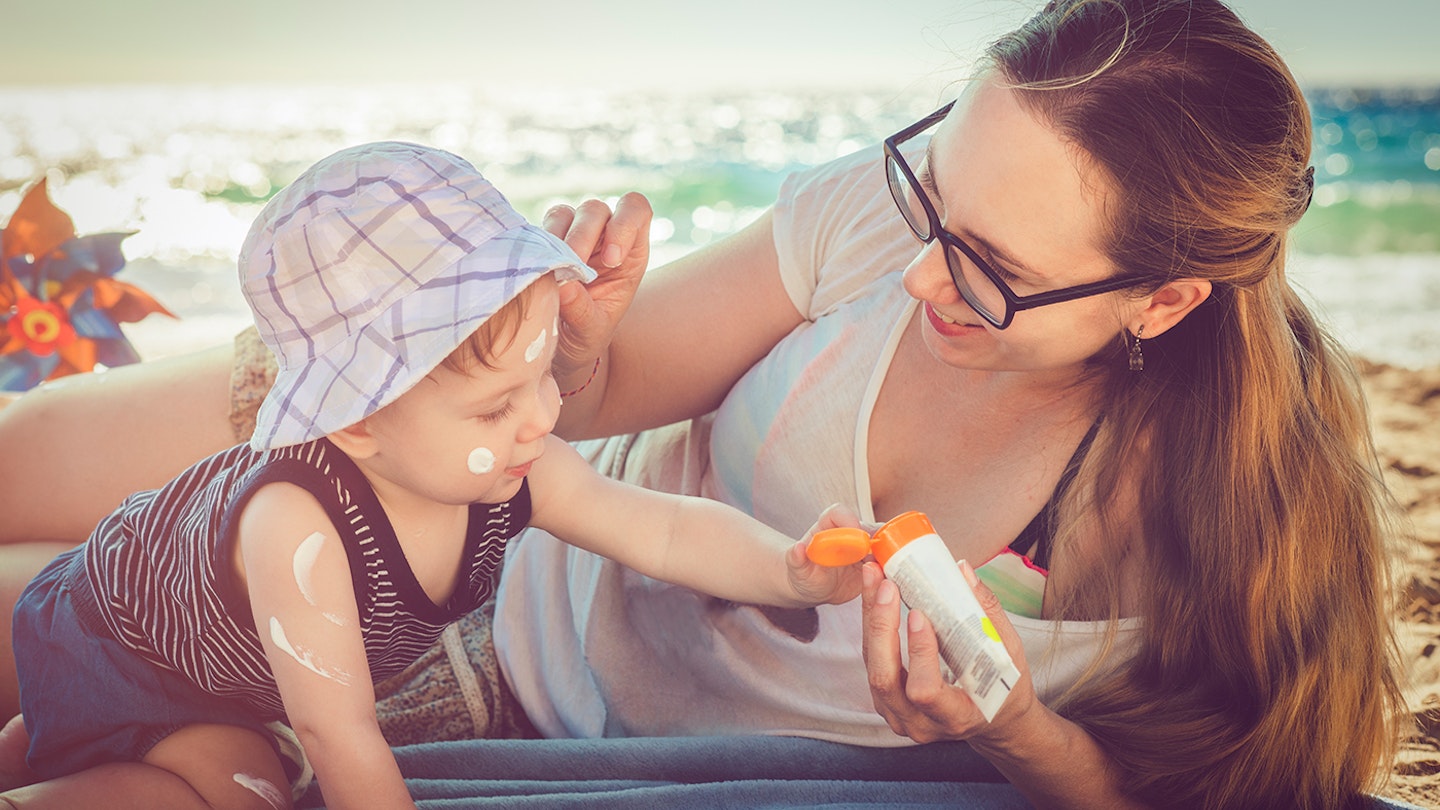Picnics, parks, garden games – enjoying time outside as a family is one of the joys of summer but while you’re out and about, remember that your baby’s sensitive skin needs a lot of protection from the sun’s rays, so you'll need the best baby sunscreens. "Your little one’s skin is at its most delicate during their first month, as it hasn’t formed the barrier that will eventually protect it from allergens, irritants and prevent infections," explains paediatric dermatologist and consultant for Childs Farm Dr Jennifer Crawley. "It's much more delicate and thinner than adult skin, which is a very effective barrier and also regulates temperature." It will take 12 months for your baby’s skin to totally mature so it’s hugely important that you take steps to protect it.
Pick the right sunscreen
We’ve never been so spoilt for choice with sunscreen. From high SPF to waterproof suncream for kids, but this means there’s a lot to think about when it comes to choosing the right one for your baby. So what exactly should you prioritise? "Firstly, you want a sunscreen that has broad-spectrum protection, which means the sunscreen provides protection against both UVA and UVB rays," says Jennifer. "UVA rays damage the tissue that provides skin with elasticity, and contributes to skin ageing, while UVB rays don’t penetrate as deeply, but can damage a cell’s DNA and cause it to become cancerous.
SPF, or Sun Protection Factor, measures the amount of UVB protection the sunscreen offers. "It’s important to choose a sunscreen with a high SPF – at least 30 – to ensure a good level of protection," says Jennifer. The star rating measures the amount of UVA protection the sunscreen offers, and ranges from one star to five. So you’ll want to look for a five-star UV rating in conjunction with a high SPF, to ensure your little one is protected from both UVA and UVB rays.
Sunscreen tends to have a shelf life of one year, as long as it’s been stored in a cool place, out of direct sunlight - but always check the expiry date on the bottle. If you can’t remember when you opened the bottle or if it’s been left out in sunlight, check the formula and if it looks like it’s starting to separate or smells funny, throw it away.

Consider your formulation
Sunscreen works in one of two ways: traditional, chemical formulations absorb ultraviolet rays, while mineral sunscreens (those that contain titanium dioxide or zinc oxide) reflect rays. Because chemical sunscreens penetrate the dermis, they can cause reactions in some sensitive skin. Mineral sunscreens are gentler on those with sensitive skin, but the downside is that they coat the skin with a thick layer, which can cause reactions such as prickly heat.
If your baby has sensitive or eczema-prone skin, use a product that’s been clinically tested as suitable for this skin type, or use a product that's been clinically tested as suitable for this skin type, or use a product that is dermatologist and paediatrician approved.
Be age-appropriate
Current guidelines advise that babies aged less than six months should be kept out of direct sunlight completely, as their skin is just too delicate to cope. "Your baby’s skin contains less melanin, which helps protect against UV light. This means their skin will burn much more easily than an older child’s or adult’s," explains Jennifer.
From six months onwards, your child’s time in direct sun should still be minimal, and they should stay in the shade from at least 11am to 3pm, when the sun is strongest.
But what about getting that all-important vitamin D? "Vitamin D is important for healthy bones, as it facilitates the absorption of calcium and phosphate, which contribute to bone growth," says Jennifer. "Babies need enough vitamin D to ensure healthy bones and teeth, however, it is important to regulate the amount of sun babies are exposed to." Rather than risk sun damage, your tot can also get vitamin D through a vitamin supplement, foods fortified with vitamin D such as cereal and yoghurt, or foods naturally rich in it such as oily fish.

Apply with care
Put sunscreen on your youngster at least 15 minutes before they go into the sun, so it has enough time to absorb. It’s a good habit to apply it again once you’re in the sun, just to make sure you cover any bits you missed the first time around. Pay particular attention to easily forgotten areas such as the shoulders, back of the neck and behind the ears.
Some products can be difficult and messy to apply, particularly on a wriggly baby! "I’d recommend involving your child in the application process so it becomes a fun task that you do together, rather than a dreaded battle," suggests Jennifer.
Roll-on suncare products are easy for children to apply themselves and can even be used to draw patterns or pictures on the skin, to make the task a little more exciting. Just be sure to get an even coverage all over, and make sure you use plenty. "My rule of thumb is to use two teaspoons of sunscreen to cover the head and neck area, and then much more on the body, about two tablespoons. Always do a patch test a week before you go away to make sure their skin doesn’t react to any of the ingredients," advises Jennifer.
Reapply sunscreen at least every two hours. And, if your youngster’s been in the water, you’ve dried them with a towel, or they've been rolling about in the sand, re-apply straight afterwards.

Double up on protection
It’s really important for your baby to wear a hat while in the sun – one that will cover their ears and neck – and sunglasses that cover all their eye and conform to European safety standards – look for CE on the label. Consider buying an all-in-one sun-protection suit that offers an Ultraviolet Protection Factor (UPF) of 50+, too. This means that just two per cent of the sun’s UV radiation will reach your youngster’s skin beneath it. Sun protection suitswork by using a tight weave of a higher amount of fibres per unit of surface area, and cover the areas most prone to burning – the body and tops of the arms and legs. Read the care advice, though, as the fabric can weaken with washing.
